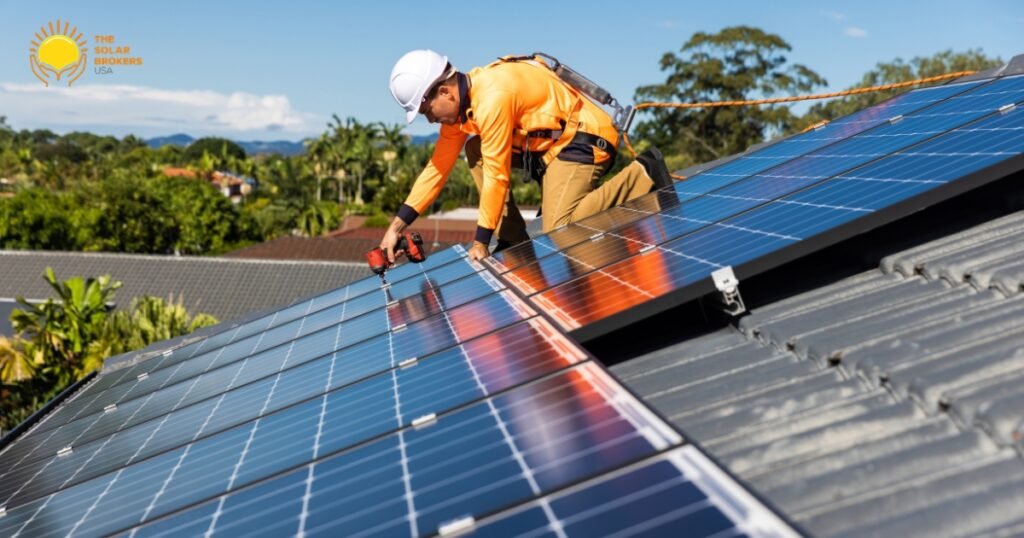
Solar panel installation provides the home with clean energy and decreases harmful effects on the environment. It reduces pollution, reduces energy bills, and encourages families to depend less on grid electricity. Thus, by harnessing sunlight as an energy source, homes can save money while also protecting the environment. The solar panel installation makes it a smarter decision for long-term sustainability.
Understanding the Need for Solar Panel Installation
Solar panel installation is a smart choice for any home or business. It provides them with cleaner energy, reduces electricity bills, and makes people less dependent on non-renewable resources. Solar systems also keep the environment protected by reducing greenhouse gas emissions as well as slowing climate change.
In the U.S., solar panels are growing more popular. According to SEIA, the country installed around 50 gigawatts of new solar capacity in 2024, a 21% jump from 2023. Then, solar made up around 66% of the electricity-generating capacity added that year. Therefore, the U.S. has almost 248 gigawatts of solar capacity installed now. This is enough to power more than 41 million homes, and solar deployment which increasing at an average rate of 28% per year. Therefore, such a shift toward solar panel installation became the nation’s energy mix.
Furthermore, the state installed around 2,496 megawatts of solar energy to power around 290,000 homes. Thus, solar energy makes up to 6.97% of the state’s electricity generation. Selecting the right solar installation in Maryland allows homeowners to get clean power and reduce energy costs.
The Basics of Solar Energy
Solar energy comes directly from the sun and is then turned into usable electricity with the help of solar panels. When the sunlight reaches the panels, the tiny solar cells present inside capture the light and convert it into electricity. Thus, such a power can run appliances, lights, and charge electric cars.
A solar system generally consists of panels, an inverter, as well as a storage option such as a battery. The inverter converts the power from the panel into electricity for the home. Next, if a battery is added, it stores all the extra energy for use at night or on cloudy days. Solar energy is considered to be renewable and clean, meaning it never finishes as long as the sun shines. It also decreases the level of pollution, as it does not run on fuel or release harmful gases into the air. Therefore, using solar energy helps to decrease electricity bills and dependence on the power grid.
Therefore, in simple terms, solar energy is considered to be nature’s free power. By learning about the basics, businesses and homeowners can select it save money and the environment.
How to Evaluate the Roof Before Panel Installation?
Before solar panel installation, check if the roof can support the panels. The roof must have the right angle, strength, and exposure to the sun. So, a right evaluation helps to achieve the best performance from the solar panels and reduce costly errors. Therefore, let’s look into the essential points.
- Roof Strength & Condition: The roof must be strong enough to hold the solar panel’s weight. Solar systems generally last for 25 years or more than that, so the roof should also last that long. However, if the roof has leaks, cracks, or weak spots, replace or repair it before starting the solar panel installation process.
- Roof Age: Installing a solar panel on an older roof may not be safe. So, if the roof is more than 15 to 20 years old, it may fail to hold the panels for a long time. Therefore, installing the panels on an old roof may lead to costly troubles, and people might need to remove or reinstall the panels while replacing the roof later.
- Roof Angle: The roof angle plays a very important role in how sunlight reaches the panels. So, the roofs with a slope between 30 and 45 degrees generally wors better. However, if the roof is flat, the panels can be installed on the tilted racks to get direct sunlight.
Solar Technology & Energy Efficiency
The U.S. government provides several incentives to encourage people to install solar panels. So, one of the most popular incentives is federal solar tax credits, also called the Investment Tax Credit (ITC). Such a program allows businesses and homeowners to reduce the percentage of cost of solar panel installation from their federal taxes. In 2025, ITC allowed people to claim up to 30% of the total system cost, including equipment, panels, and installation. On the other hand, many states offer extra benefits such as grants, rebates, or performance-based incentives to reduce upfront costs. Therefore, making the solar system easily affordable helps people recover the investment cost faster.
Tax credit generally decreases the amount of tax to be paid, instead of just reducing the taxable income. For example, if someone spends $20,000 on solar panels, the 30% federal tax credit allows people to save up to $6,000 in taxes. Furthermore, people can also combine these state-level incentives and rebates, indicating more savings. A few states also allow people to sell back the extra electricity generated through net metering programs, which decreases utility bills. Thus, by using these tax credits and incentives, the homeowners can reduce the cost of the solar panel by half, making clean energy both rewarding and affordable.
Conclusion
Installing solar panels gives homes and businesses clean energy, lower bills, and a way to stay green for a long time. It cuts down on pollution, makes the grid less important, and gets tax breaks. Solar energy is a smart, cheap, and eco-friendly choice that helps save money and protect the environment when roofs are strong and the right incentives are in place.
